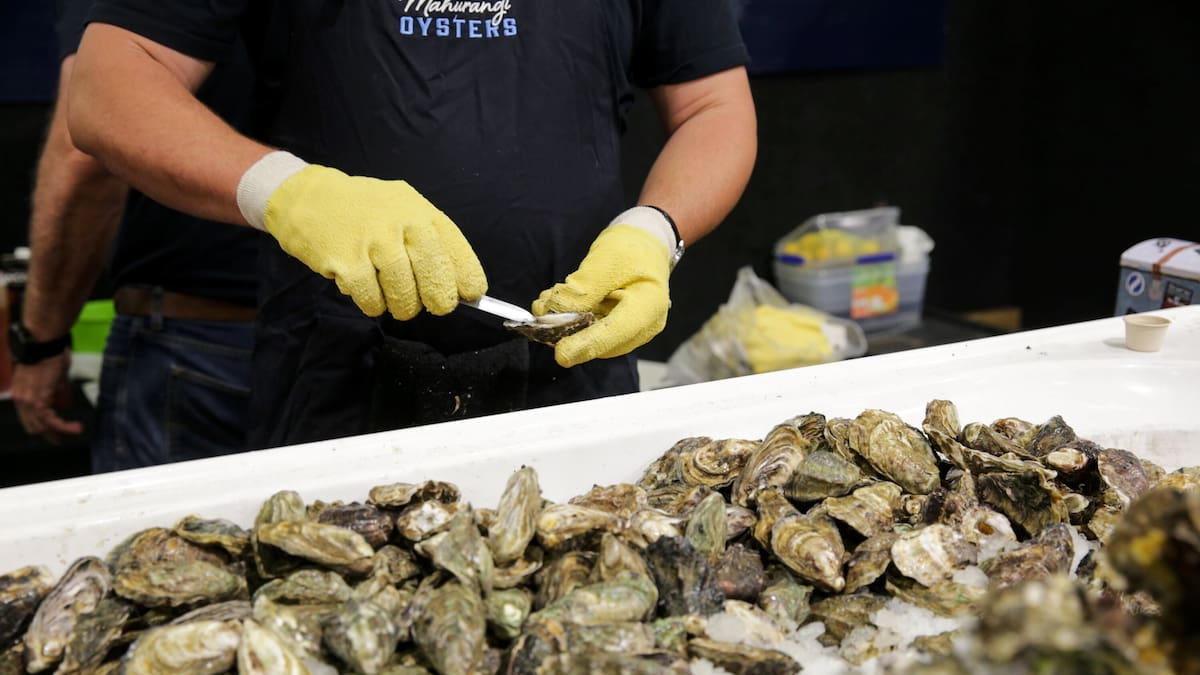Cooking the shellfish does not remove the toxin.
The toxins originate from a naturally occurring algal bloom in the region, which shellfish filter-feed on, Arbuckle said.
NZFS is monitoring an algal bloom in the region.
This algae releases harmful toxins that accumulate in the gut and flesh of shellfish as they filter-feed, Arbuckle said.
“Generally, the more algae there are in the water, the more toxic the shellfish get.”
Symptoms of paralytic shellfish poisoning can appear within minutes to a few hours of eating affected shellfish.
Symptoms include numbness or tingling around the mouth and extremities, difficulty breathing, nausea, vomiting and, in severe cases, paralysis or death.
Crayfish can still be eaten if the gut is removed. Photo/ Brett Phibbs
“Pāua, crab and crayfish may still be eaten if the gut has been completely removed before cooking, as toxins accumulate in the gut,” Arbuckle said.
“If the gut is not removed, its contents could contaminate the meat during the cooking process.”
Finfish are not affected by the health warning, but gutting the fish and discarding the liver is advised.
NZFS has had no notifications of associated illness.
“NZFS is monitoring shellfish in the region and will notify the public of any changes to the situation,” Arbuckle said.
Commercially harvested shellfish sold in stores or exported undergo strict safety monitoring by NZFS.
If anyone becomes ill after eating shellfish from an area where a public health warning has been issued, phone Healthline for advice on 0800 61 11 16, or seek medical attention immediately.
Tom Eley is a multimedia journalist at the Waikato Herald. He previously worked for the Weekend Sun and Sunlive.

